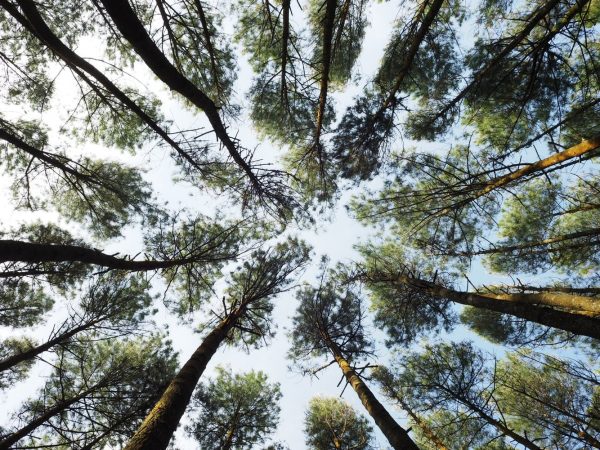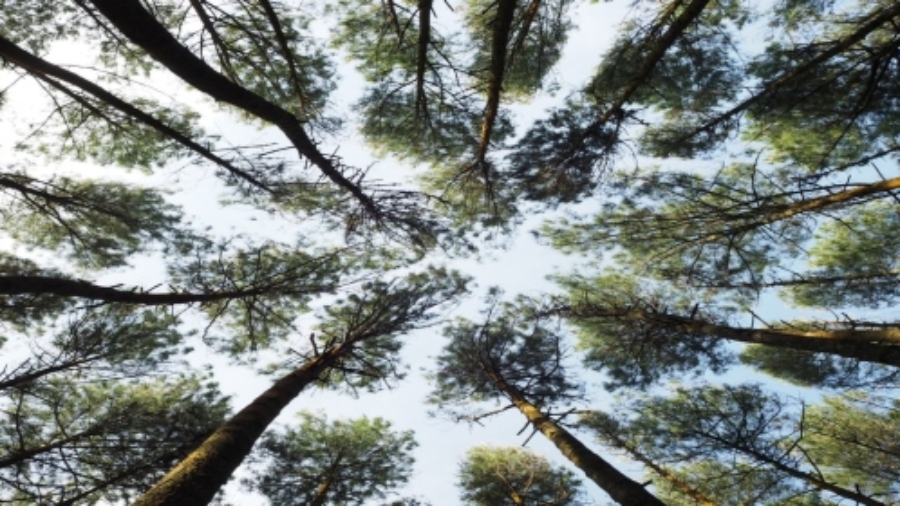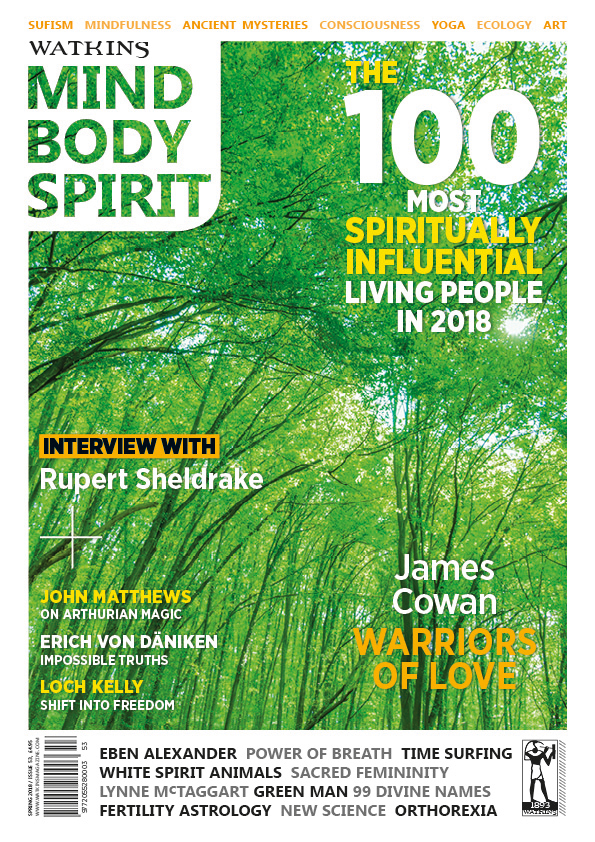
This article first appeared in Watkins Mind Body Spirit, Issue 53
Environmental psychology consultant and researcher Lily Bernheimer describes how everyday spaces structure our lives, behaviour, and well-being
‘We shape our buildings, and afterwards our buildings shape us,’ as Winston Churchill famously said. And he was right. But long before buildings, the elements and environments of our natural habitats shaped us.
The Shaping of Us is not a book about nature versus nurture. It’s about both. Because the environments we evolve in shape us so profoundly that their influence defies this distinction.
Our surroundings can make us healthier and less likely to litter, enhance our beauty, decrease our perception of pain, and enable us to solve puzzles more quickly. Environmental psychology research has shown that the built environment supports our well-being best when it echoes the natural world in some way – through pattern, dimension, light, layout, sound – the scale and tone of the world that we were built for.
According to Darwinian theory, all animals should be attracted to the sort of settings they excel in. For humans, this means habitats that provide the right balance of information and safety. We can’t swim, fly, or smell very well, but we glide gracefully through seas and skies of information—our special super power. We follow the promise of new environmental information like a bloodhound tracks a scent.
We like spaces that flirt with us: complex and mysterious settings. While orderly layouts like American street grids are easy to navigate, they aren’t the environments we love most. We prefer streets that curve out of sight, leading us on with a tantalising hint of what lies beyond. We love mystery. The forest path, a tunnel of trees. The spiral staircase. Locked doors and secret gardens.
What attracts us in a landscape is a lot like a mystery novel: a mystery that we can readily read. In the millions of murder mystery novels and Law and Order episodes devoured each year, how many don’t unveil the murderer? We like environments that are mysterious enough to excite our curiosity but also enable us to satiate it.
An environment is ‘legible’ if it’s easy to survey and form a cognitive map of. Prospect– the ability to see the distance—is part of this. But to be truly legible, there must be elements that help us find our way forward and back as we explore. Features like the clumps of trees found in the African savannah, where we evolved, and in the classic landscape design of British estates.
The landscapes we love most balance legibility with mystery, coherence with complexity. Natural scenes are marked by fractal geometry, which turns out to involve a specific recipe of order and complexity. We see fractals most clearly in trees and coastlines, which repeat self-similar forms on smaller and smaller scales. And because our visual perceptual system evolved to function in this fractal world, we find these environments calming and pleasing. Gazing at a tree can swiftly reduce blood pressure and the circulation of stress hormones.
These same natural patterns hold the key to understanding well-being in the environments we have built. Traditional building forms around the world consistently embody fractal qualities, from the detailing of window frames to the cascading domes of Hindu temples and the configuration of London’s streets.
The form of vernacular structures and settlements arose from the ordered complexity of our own minds and bodies—human neurological processes display fractal properties, as does the biology of our cells and lungs. Buildings used natural materials such as wood and stone. Places grew slowly. Roads followed the contour of the land. There was more mystery, variety, and malleability.
But much of the ordered complexity we used to find in built environments has been lost in the colossal scale and fast pace of 21st century life. From noisy yet visually understimulating open-plan offices to cookie-cutter homes and deadly intersections, we know that many of our environments today are failing terribly to support well-being, community, and creativity.
Visiting workspaces, housing, and public space projects and reviewing research from around the world, I found there was often a temptation to fix the symptoms of social problems expressed in broken physical fabric with a sort of plastic surgery approach—without addressing the underlying causal conditions.
‘You can’t rewrite the built environment by just changing the built environment,’ as architect and WikiHouse co-founder Alastair Parvin explained to me, ‘You’ve got to lift up the bonnet and look at the economics that are the real forces that shape it…. What most people call bad design isn’t bad design. It’s really good design for a totally different set of economic outcomes, which is producing real estate.
So how can we recreate the world we want to be defined by?
What if we could collectively build our cities and share resources as easily as we can edit Wikipedia pages? This is what Parvin and his colleagues at WikiHouse, an open-source platform for designing and constructing affordable homes, have set out to facilitate.
From the clever Chilean ‘half-houses’ to Detroit’s urban farmers and Bristol’s street artists, WikiHouse and other projects like it represent a revolution in our ability to nurture and shape our own environments.
Giving people the tools to co-create their own homes, streets, and workspaces can restore a human scale and timbre to our everyday spaces. It can help us build in ways that are more resilient, cost-effective, and better suited to human needs. And when people are involved in creating their own environments, they also feel a greater sense of agency, efficacy, and pride.
This sense of common agency is known as ‘collective efficacy’. Collective efficacy requires social cohesion, combined with a readiness to take action for the common good. A growing body of research indicates that when people see themselves and their communities as capable of dealing with a threat—say climate change or economic injustice—they are far more likely to actively engage. When communities have high rates of collective efficacy, they also tend to have less litter, vandalism, and violent crime.
From informal settlements to Dutch streets and cooperative workspaces, where we see collective efficacy and the ordered complexity it creates, we see vibrant, healthy places. To build a resilient future, we must take an active role in the shaping of our own environments – the shaping of us.
MEET THE AUTHOR
LILY BERNHEIMER is an environmental psychology consultant, researcher, and writer. She is Founding Director of Space Works Consulting where she consults on how to make workspaces, dwellings, and urban environments work for the people and purpose they serve. Her recent research includes a major report for Adam Architecture and Grainger plc: Tomorrow’s Home: Emerging Social Trends and their Impact on the Built Environment, which has been shortlisted for the RIBA president’s award for research. Her work in human-centred design has ranged from directing a documentary about public space to creating a collaborative mapping platform for new bike racks, and has taken her from her native California to New York City, Amsterdam, London, and Bristol. She regularly speaks at forums such as Clerkenwell Design Week, the London Festival of Architecture, the Academy of Urbanism, and RIBA.
Find out more at www.spaceworksconsulting.co.uk



